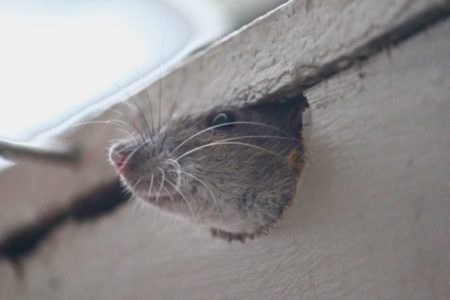By: Isaac Gibson, ACE, PCQI
A vital step when dealing with rodents in commercial accounts is conducting a proper pre-inspection, which needs to be performed prior to placing control measures. Taking time to conduct a pre-inspection can help you with an informed approach to your service. As a result, this may also lead to shorter escalation periods.
Below are some important components of a pre-inspection to consider. Many of these steps also should take into consideration your client’s feedback:
1. Proper pest identification.
This should be the first step in your inspection. Proper identification will guide the control method needed for that rodent. For example, if you set out glueboards but are really dealing with a roof rat problem, control attempts will not be successful.
2. Identify how long the rodent issue has existed.
Conduct interviews with the client and, if possible, neighboring businesses to establish length of infestation. Determine if there is an established small population of rodents or a massive number. Implement a pre-baiting program to help you determine the actual level of infestation.
3. Consider current controls in place and determine if they are working.
Review prior capture history and utilize what is working, but be sure to make modifications where needed. Too many times we go around in circles doing the same thing repeatedly only to get the same result. That leads to numerous callbacks without a solution. Repeat what works, not what doesn’t.
4. Determine the size of the population.
If live rats are being seen multiple times during the day, it is likely there is a mass population (40-50 rats) nearby. One or two rats during the day may indicate a smaller population.
5. Find the nest if possible.
Having control measures placed near the nesting site is key.
6. Are there available food and water sources at the location?
Remember, rodents need food, shelter and water to survive. If we can eliminate even one of those sources, then we can stress the rodent and have a better chance in controlling the population. Remove the food source, and the rodents will take to our pre-baited traps.
7. Are there other conducive conditions?
Keep in mind that a conducive condition is one that helps rodents thrive. Additional conducive conditions could look like water leaks, food spillage, bird feeders on the property, vegetation against the wall, tree branches reaching over the roof line, overflowing dumpsters, etc. These conditions should be addressed with the client.
8. Are there exclusion opportunities?
This starts on the outside of the facility. Determine how rodents may be getting into the building. Is there a structural, environmental or behavioral issue? Resolving exclusion issues is a way for us to “rodent-proof” our accounts and also can be an added stream of revenue.
Conducting a proper pre-inspection not only helps save time and money when it comes to control efforts, it also shows our clients that we are dedicated to protecting their business and are willing to take the time to consider all aspects of their pest management program.
Isaac Gibson, A.C.E., PCQI, is a service quality manager for Copesan.
This Tech Talk article was originally published in the September 2021 edition of PCT magazine.

